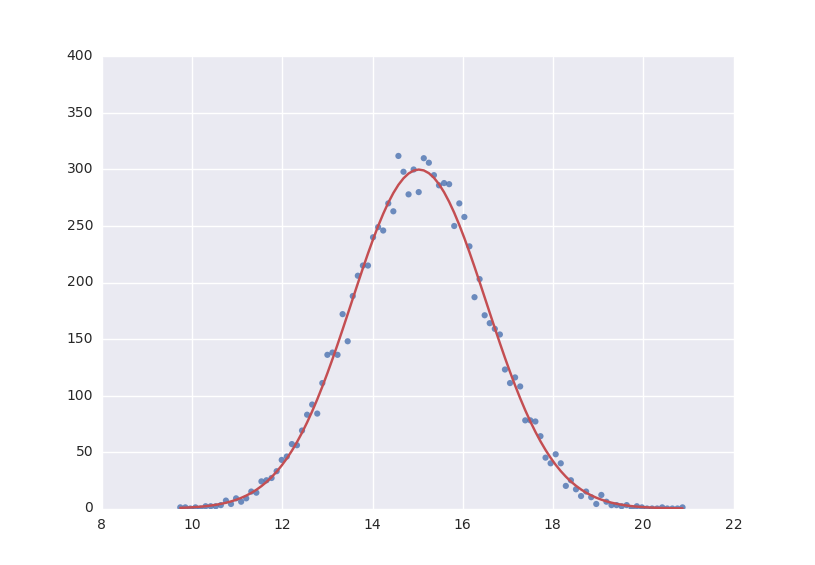Introduction¶
Existing fitting modules are not very pythonic in their API and can be difficult for humans to use. This project aims to
marry the power of scipy.optimize with the readability of SymPy to create a highly readable and easy to use
fitting package which works for projects of any scale.
symfit makes it extremely easy to provide guesses for your parameters and to bound them to a certain range:
a = Parameter(1.0, min=0.0, max=5.0)
To define models to fit to:
x = Variable()
A = Parameter()
sig = Parameter(1.0, min=0.0, max=5.0)
x0 = Parameter(1.0, min=0.0)
# Gaussian distrubution
model = A * exp(-(x - x0)**2/(2 * sig**2))
And finally, to execute the fit:
fit = Fit(model, xdata, ydata)
fit_result = fit.execute()
And to evaluate the model using the best fit parameters:
y = model(x=xdata, **fit_result.params)
As your models become more complicated, symfit really comes into it’s own. For example, vector valued functions are
both easy to define and beautiful to look at:
model = {
y_1: x**2,
y_2: 2*x
}
And constrained maximization has never been this easy:
x, y = parameters('x, y')
model = 2*x*y + 2*x - x**2 -2*y**2
constraints = [
Eq(x**3 - y, 0), # Eq: ==
Ge(y - 1, 0), # Ge: >=
]
fit = Maximize(model, constraints=constraints)
Technical Reasons¶
On a more technical note, this symbolic approach turns out to have great technical advantages over using scipy directly.
In order to fit, the algorithm needs the Jacobian: a matrix containing the derivatives of your model in it’s parameters.
Because of the symbolic nature of symfit, this is determined for you on the fly, saving you the trouble of having to
determine the derivatives yourself. Furthermore, having this Jacobian allows good estimation of the errors in your parameters,
something scipy does not always succeed in.
